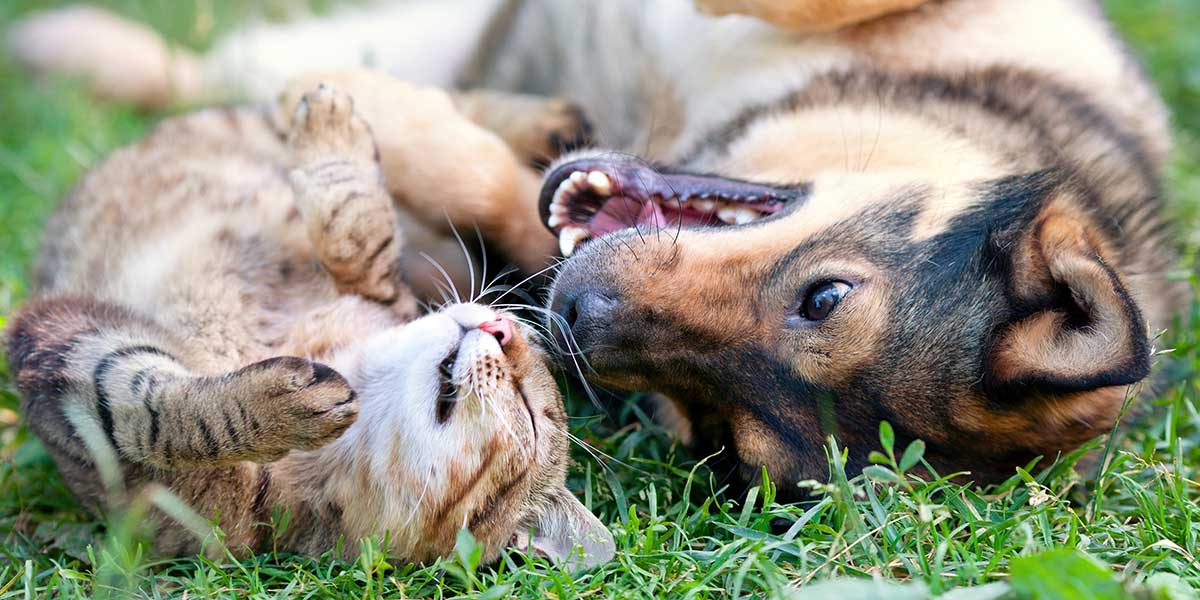The last of the summer’s harvest is being gathered in, the kids have returned to their classrooms (oh joy!), and already the leaves in some places are starting to turn. That can mean only one thing: fall has arrived!
September 22 marks the autumnal equinox, when the hours of daylight and dark are equal. With this shift in seasons, we should also shift our thinking and habits regarding our beloved dogs and cats. Here are a few ideas, apropos for this time of year, to keep your pets safe and happy.
Weather
 Beginning today and for the next three months, in the northern hemisphere the hours of daylight will get shorter and shorter. And though some days will seem balmy, even summer-like, nighttime temperatures can often plummet to very uncomfortable or even dangerously low levels. In fact, the first frost means the thermometer fell below freezing.
Beginning today and for the next three months, in the northern hemisphere the hours of daylight will get shorter and shorter. And though some days will seem balmy, even summer-like, nighttime temperatures can often plummet to very uncomfortable or even dangerously low levels. In fact, the first frost means the thermometer fell below freezing.
- Make sure your outdoor pets have sufficient shelter for when the weather turns inclement. And for any animal (especially puppies and older pets), avoid subjecting them to prolonged exposure to the cold.
- With cooler temperatures, cats and dogs will need more energy to stay warm. Check with your vet to see whether you should supplement your pets’ regular diet with extra (or different) food.
- When the air turns nippy, humans bundle up. So do dogs! If you shave your pet in summertime to help him/her keep cool, now is the time to let your furry friend’s natural coat grow back.
Wildlife
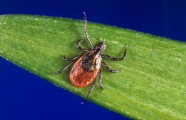 Summer may be over, but many species of ticks remain active throughout the fall. Some can even survive the first frost. Don’t stop using safe tick control products for your pet, and check frequently for those nasty bugs (especially if your pet spends a lot of time out-of-doors). Even so, every pet should be screened annually for tick-borne infections.
Summer may be over, but many species of ticks remain active throughout the fall. Some can even survive the first frost. Don’t stop using safe tick control products for your pet, and check frequently for those nasty bugs (especially if your pet spends a lot of time out-of-doors). Even so, every pet should be screened annually for tick-borne infections.- With the end of summer, snakes preparing for their long winter hibernation underground can get testier than usual (and who can blame them?!). A snakebite from a rattler or copperhead is no laughing matter. Be aware of any venomous species of snake that may inhabit your area, and take steps to steer your pet clear of them.
Other Outdoor Perils
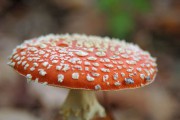 Fall, like the spring, is prime mushroom season. Most wild mushrooms that you may find growing in the forest or sprouting in your yard are harmless; but a few are extremely toxic to animal and human alike. Unfortunately, it is not always easy to distinguish between the “good” mushrooms and the bad. Don’t take a chance, and keep dogs and cats away from areas where mushrooms are growing. If you do see your pet chowing down on a mushroom, immediately call your veterinarian or the ASPCA Animal Poison Control Center (at 888-426-4435).
Fall, like the spring, is prime mushroom season. Most wild mushrooms that you may find growing in the forest or sprouting in your yard are harmless; but a few are extremely toxic to animal and human alike. Unfortunately, it is not always easy to distinguish between the “good” mushrooms and the bad. Don’t take a chance, and keep dogs and cats away from areas where mushrooms are growing. If you do see your pet chowing down on a mushroom, immediately call your veterinarian or the ASPCA Animal Poison Control Center (at 888-426-4435).- Besides harboring ticks, autumn compost piles can produce a variety of toxins. Don’t let your pet play in or nibble at them. If at all possible, cover or otherwise enclose your compost bins.
- Don’t let your pet play in yards where pesticides and other autumn lawn care products have been applied.
- Fall is a good time for car-owners to fill up on anti-freeze. However, ethylene glycol-based engine coolants are highly toxic, yet have a pleasant odor and taste that may prove irresistible to your animal. Clean up any spills right away, and keep your pet away from places where it may have leaked onto the ground. You might also consider switching to a propylene glycol-based coolant, which is much less toxic.
- Once October rolls around, hunters will be out in force. If you go out hiking in areas where hunting is allowed, make sure you and your pet wear bright colors so you are not mistaken for the hunter’s prey.
Indoor Perils
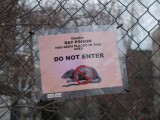 Humans and snakes are not the only creatures who prepare for winter. Rats and mice do too! Any of the poisons you may place in and around the house to control rodents seeking shelter from cooler temperatures are poisonous to other animals as well. If ingested by a dog or cat, such rodenticides can be fatal to them. Use these products with extreme caution, and place them only in areas that are inaccessible to your pets.
Humans and snakes are not the only creatures who prepare for winter. Rats and mice do too! Any of the poisons you may place in and around the house to control rodents seeking shelter from cooler temperatures are poisonous to other animals as well. If ingested by a dog or cat, such rodenticides can be fatal to them. Use these products with extreme caution, and place them only in areas that are inaccessible to your pets.- Back-to-school time means your kids may leave crayons, writing and drawing implements, glue, and other school supplies lying around the house. And between Halloween, Thanksgiving, and Christmas, the home will be awash in decorations. All these fun, new, glittering objects may seem like toys to your pet. But some could be toxic, while others may present a choking hazard. Keep all such school supplies and decorations out of reach of your pets’ paws!
- Along with holiday decorations come special holiday foods; which is great for people (if you don’t mind putting on a few pounds) — but maybe not so great for our pets. Be very vigilant about what people-treats you give your animal or leave unattended on the counter. For example, chocolate, grapes, and raisins are toxic to dogs. Find out from your vet what’s safe for your pet to eat and what’s not so safe!
- An animal can suffer severe burns from an unattended fireplace or indoor electric heating device. Keep an eye out that they don’t get too close; and always turn off such devices when you leave the house to prevent accidents or fires.
Taking Care of Business
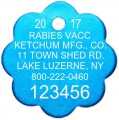 The shift in seasons serves as a good reminder to make sure your pets’ rabies shots, heartworm preventatives, and I.D.s are all up-to-date. We carry a broad selection of dog and cat tags in a variety of shapes, sizes, and colors, as well as rabies tags for 2016 and 2017.
The shift in seasons serves as a good reminder to make sure your pets’ rabies shots, heartworm preventatives, and I.D.s are all up-to-date. We carry a broad selection of dog and cat tags in a variety of shapes, sizes, and colors, as well as rabies tags for 2016 and 2017.
We at Ketchum Manufacturing wish you and your four-legged friends a fabulous fall season!
